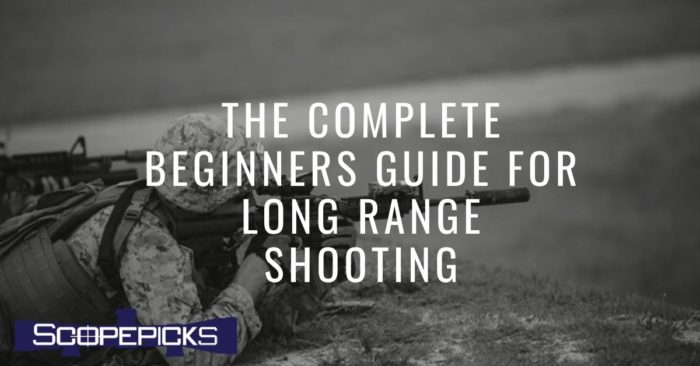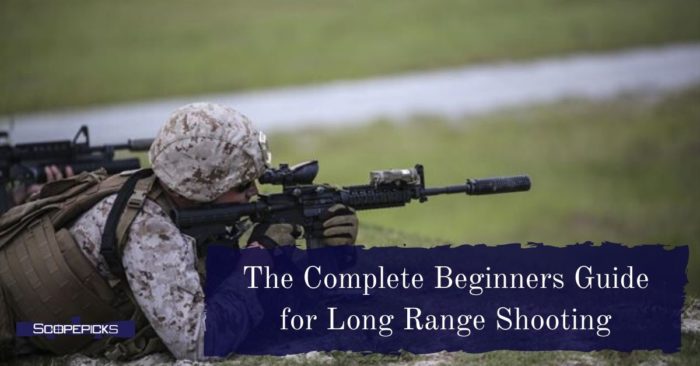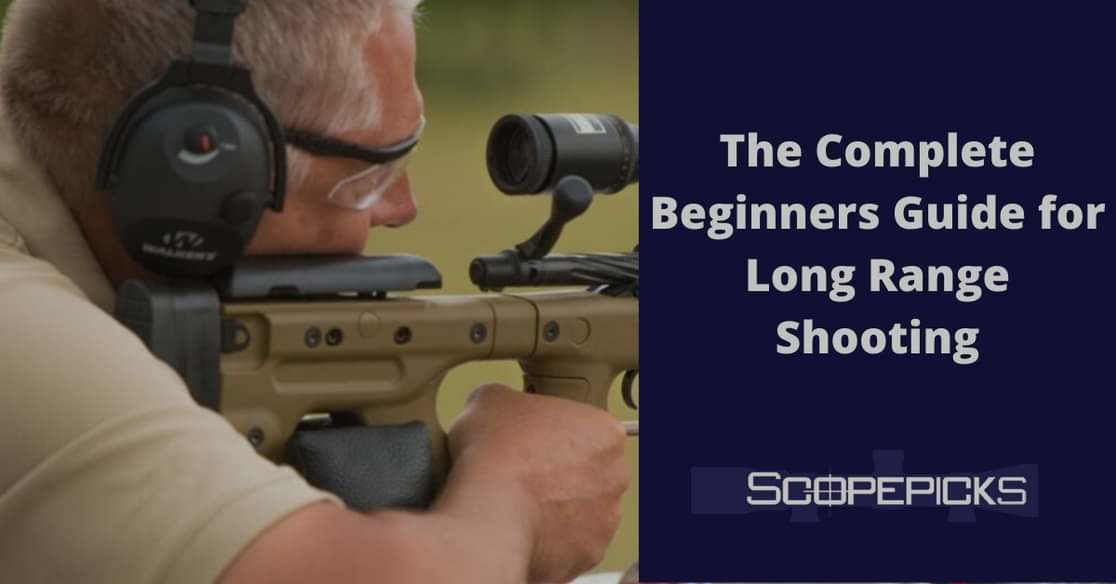Introduction
For an enthusiastic shooter, hitting a tiny target almost out of sight is an amazing thing. For some beginners, such a skill may seem unattainable but that is not true. It all begins with a desire to become an expert. Then with strong dedication and constant practice, you can become the pro that you desire to be. In this guide, we will explain you the basics of long-range shooting and share some pro level long range shooting tips too.Taking your skills to the next level requires some time, passion and training. It is gratifying to reach that level that you desire. Whatever you will read here is what any good shooting book would tell you. Here are the complete guide on long range shooting for beginners.
Which Distance is Long Range?
As a beginner, you need to understand what long-range shooting means. Different shooters may categorize distances differently, though the disparities between different categorizations are often very minimal. Long-range shooting is when you have to engage targets at such extensive distances that you have to calculate ballistics with regards to bullet fall and wind.
Therefore, you know you are shooting long-range when you have to make a significant adjustment to your zero to hit your target due to wind deflection and gravity drop. The most common categorization defines short-range as less than 300 yards and long-range as between 300-1200 yards. The extra-long range is a distance that is greater than 1 mile.
What Differentiates Long Range Precision Shooting with Basic Range Target Shooting?
Perhaps the most notable difference between long-range precision shooting and basic range target shooting is the need for the shooter to compensate for environmental conditions and bullet drop in the former.
In addition to that, the fact that long-range shooting requires tools used in figuring out both environmental conditions and bullet drop is also extra for it in this comparison. As a beginner, you need to understand the difference between these two for the sake of having a better understanding of long-range shooting.
In hunting at short distances or simple target shooting, you can eyeball the bullet drop. However, things are different with long distance shooting. When you are shooting at a target at a 1000 yard range, a high degree of accuracy and precision is needed.
Also, with the latter, you are required to make a series of adjustments to your scope to compensate. With long distance shooting, you cannot make it with mere guesswork.
It is the above-mentioned tasks and operations that differentiate long-range shooting from other forms of shooting. Being a starter requires you to understand all these, especially since they are part of the basics. Remember, as a long-range shooter, you also need primary shooting skills to be the first-rate. This is necessary especially because any error you make when shooting a long-range target will be exaggerated.

Long Range Shooting Fundamentals
Before you begin long-range shooting, here are long range shooting accessories that you need to have.
Optic
What do you need to have a significant beginner time or moment? The most important gear as far as accuracy is concerned is the optic. Optics for long-range shooting tend to be different from those used for hunting. They usually have bullet drop and windage calibrations.
Similarly, the adjustment increments in the scopes need to be precise and consistent. That is also one of the ways to recognize a quality optic. Knowing all these as a beginner will help you make significant steps towards being a pro. Invest in a quality scope as you remember to avoid cheap scopes like plague, especially since they have an issue in this area.
Features of a Quality Scope
For one, the scope needs to have turrets. This feature enables you to ‘dial in’ the changes you need for different distances. Another important feature that is found in quality scopes is the parallax knob. It allows you to eliminate parallax from the scope.
As you know or you should know by now, parallax is a spoiler since it interferes with the final point of impact if you do not compensate for it when shooting at distance.
Likewise, you need a scope with high-quality glass and magnifications. That way, the high-quality scope can read the conditions out at a distance. Only a good quality scope can give you that and as a beginner, this is a point worth taking note of.
The earlier you know what is good for your success or excellent performance at the field the better it will be for your progress and growth. You will advance faster and more than somebody who uses low-quality equipment or gear.
Rifle
Of course, you need a rifle. If you are going to get yourself a new rifle, make sure it has a good barrel. It should have a good stock too. And most of all, your new rifle should be designed and well suited for the task. There you go. The average hunting rifle is not ideal for long distance shooting.
It cannot consistently deliver precision and accuracy that rifles designed for long-range shooting do. Rifle and scope are the most basic equipment needed to get started. However, you can always include other long-range shooting accessories such as binoculars, windmeter, and rangefinder in your tools collection if you are planning to do a serious long-range shooting.
You can check out the price of binoculars, windmeters, and rangefinder in here.

Shooting Tips for Beginners
Long-range shooting is an amazing activity that is growing popular. It is not only done for leisure but also as a profession. Snipers like FBI snipers and the royal marine snipers earn from their unique talent in shooting.
Many people yearn to be the next great shooters but miss get-go tips for long-range shooting. Below are some tips which guarantee you will be a superb shooter.
Handle a rifle right
In most cases, carelessly handled rifles are dangerous. The rifle should point in a direction where in case of a stray bullet discharges, it would cause no damage or injure no one. Point your rifle downwards when not in use. Avoid the trigger unless you are sure your target is accurate to avoid stray bullets.
Differentiate long-range shooting from long range hunting
Long-range shooting entails shooting at a targeted point while positioned at a fixed ground whereas real hunting entails shooting a moving target. The target in long-range shooting cannot move which makes it a total contrast of hunting. Make sure you master these differences before engaging in long-range shooting.
Reduce recoil
A recoil occurs when a gun is discharged. This usually has a great knockback force which could injure the user if not handled carefully. The rifle should be held appropriately, that is, firm rather than a tight grip. This way a user can easily control the recoils.
Gloves also protect from recoils. You can as well use muzzle brakes since they reduce recoil by 50 percent, the strength of knockback is therefore reduced.
Check the view through the scope
You have to make sure the view through the scope is as clear as possible before shooting just as a photographer has to have a clear view of an image through the lens before capturing. If the vision is obscure missing the target is inevitable. Adjust the objective lens and rear lens such that a clear view of the target is revealed. A dirty lens or a shadow can make an individual miss the target.
Positioning is vital
To ensure a perfect shot, rest at a perfectly comfortable position. A stable position ensures a rifle is at a fixed ground hence it cannot topple over during a shooting. An excellent way to achieve a relaxed position is by lying on the ground, both elbows and forearms in contact with the ground.
The rifle should be pointing the target. Readjust the position of the rifle to suit your target by moving it to a more accurate position.
Learn the effects of wind and gravity on a bullet
Wind and gravity affect the bullet in different ways. You, therefore, need to know how to compensate for these elements. Increasing winds result from a long-range shot and it changes the capability of a bullet reaching the target. Long-range shooting calls for a vast knowledge in calculating speed and coming up with a way of dealing with gravity.
Routine exercising also helps
You ought to start with shooting at nearer targets and when accurate shooting is achieved, long-range shooting shouldn’t be a problem. Change your ranges step by step and by the time you are done with short-range shooting you acquire vitals skills of proper shooting in general. This will be a starter for long-range shooting.
Long-range shooting books
You can also go through several long-range shooting books to get more details. The following four books is my recommendation:
Long-Range Shooting Handbook: Complete Beginner’s Guide to Long-Range Shooting – by Ryan Cleckner
Precision Long-Range Shooting And Hunting – by Jon Gillespie-Brown (4 books Series)
Long-Range Precision Rifle, Expanded Edition: The Complete Guide to Hitting Targets at Distance – by Anthony Cirincione II
Fundamentals of Long Distance Shooting: Beginners to advanced shooters – Ralph Troy Hicks
Final Verdict
Good shooting skills can be used in different fields of expertise. From long range hunting to long range target shooting, sporting or not, you can use your skills for the greater good. This guide should start you off and help nature your skills as a beginner. It has been created with a contemporary shooting enthusiast in mind. The rips all boil down to choosing the right gear and being principled as far as practicing and long range shooting right is concerned. Strive to proper as a long-range shooter.
